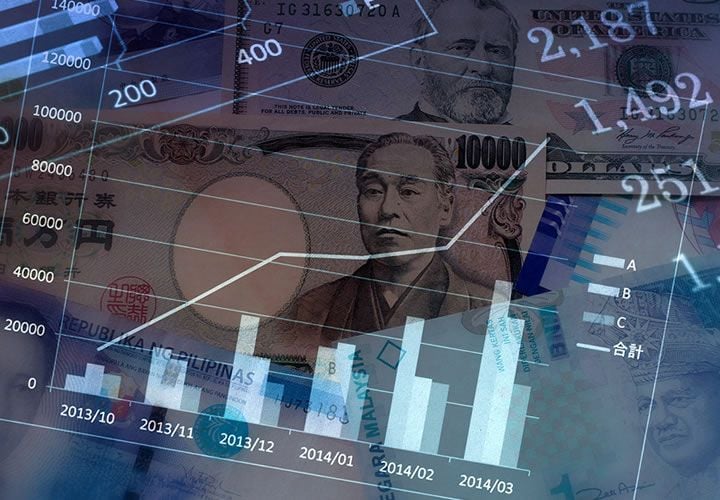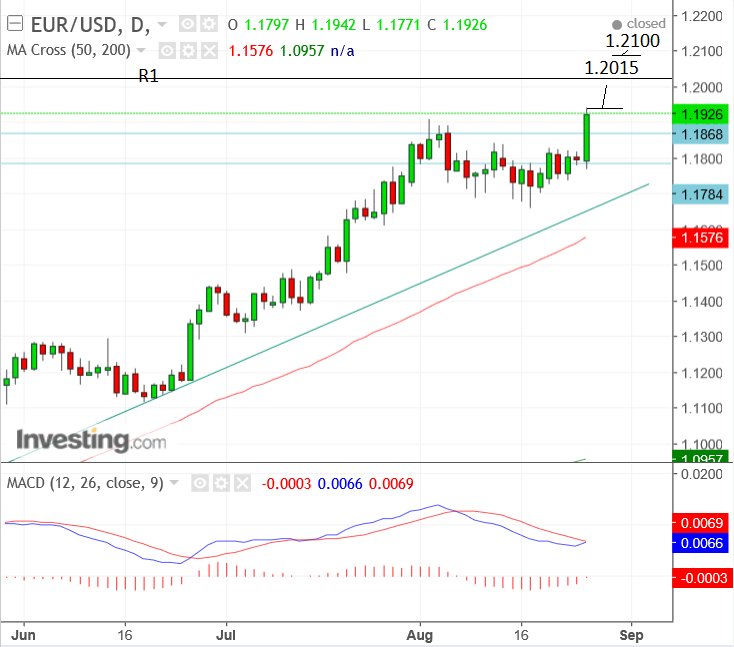EUR/USD Rate: Technical Forecast, Data and Events in the Coming Week

The EUR/USD starts the new week on the front foot largely on the back of events at the Economic Symposium in Jackson Hole, Wyoming ahead of the weekend.
The Dollar weakened following comments from both Federal Reserve Chair Janet Yellen and European Central Bank President Mario Draghi.
Draghi did not mention the strength of the Euro as a cause for concern in his address; something many in the market were nervous of heading into the event. That Draghi did not touch on any details regarding the exchange rate and future ECB policy saw the Euro rally.
Yellen meanwhile talked in positive terms about the economy and the labour market but failed to mention anything about whether the Fed was preparing to cut its balance sheet as some had expected.
The Fed holds trillions of dollars worth of bonds on its balance sheet which it accumulated when it conducted quantitative easing (QE) after the financial crisis, currently when these bonds mature the Fed's policy is to reinvest the principle into buying more bonds.
However, it is expected the Fed may stop reinvesting, but no information was forthcoming from Yellen, which disappointed the Fed and led to a sell off.
EUR/USD has resumed its uptrend and broken above the 1.1911 highs, to reach new highs at 1.1942.

It is likely to continue its dominant trend higher, with a break above the 1.1950 level confirming a continuation up to the next target at 1.2015 where the R1 monthly pivot is situated.
Monthly pivots represent target levels for traders to fade the trend and attract a lot of selling, tending to bar the direction of the dominant trend, we, therefore, see it as a significant level for the exchange rate to stall.
Data and News for the Dollar
The Dollar's weakness following the Jackson Hole symposium came as a result of Janet Yellen not mentioning anything about the Fed cutting its balance sheet or raising interest rates, however, her comments were not seen as negative and may even have been construed as positive, since she highlighted the continued improvement in the economy.
It is possible, therefore, that the Dollar's bout of weakness may be shortlived as there is little fundamental content underpinning it.
The main release for the US Dollar in the week ahead, however, is probably likely to be Non-Farm Payrolls on Friday, September 1, at 13.30 BST.
Payrolls are expected to rise by 180k in August versus 209k previously.
Average Hourly Earnings, released a the same time, are expected to have risen by 0.2% in August and the Unemployment Rate is forecast to remain at 4.3%.
According to investment bank TD Securities, "The combination of near-consensus job growth and an on-consensus pickup in wages argues for a hawkish reaction, given how much wages have disappointed the last four months."
Other significant data for the Dollar, includes Consumer Confidence at 15.00 on Tuesday 29, Q2 GDP at 13.30 on Wednesday, Personal Consumption Expenditure on Thursday at 13.30, which is important because it is the Fed's favoured gauge of inflation; and finally Michigan Sentiment on Friday at 15.00.
News and Data for the Euro
"Assuming Jackson Hole doesn't ignite too many fireworks, expect the benign market conditions to extend into next week and the EUR to remain supported," says ING's Chris Turner, who further adds that he does not expect Eurozone inflation data to impact negatively on the Euro even if there is a risk it is soft, because, "the Eurozone macro story - which backs an eventual ECB tapering - remains firm."
As such centre stage in the coming week, is inflation data - CPI - which is out at 10.00 BST on Thursday 31.
Inflation is forecast to show a higher 1.4% rise in August from 1.3% in July, whilst Core Inflation is forecast to rise by 1.2% - the same as previously.
The release is of significance because it could have a major impact on European Central Bank (ECB) policy, as higher inflation will make it easier for the ECB to dismantle its stimulus programme; and a reduction in stimulus would be positive for the Euro, however, a suprisingly high print is probably necessary to change the expected rate of stimulus wind-down, which is unlikely.
The Unemployment Rate is released at the same time as CPI, and is forecast to stay at 9.1%.
Manufacturing PMI for August, out at 9.00 on Friday 1, is expected to stay at 57.4.




